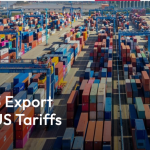Total number of posts 461.
In the first 5 months of 2025, ASEAN surpassed other regions to become China’s largest trading partner and South Korea’s top export market, underscoring the region’s growing importance in supply chains and regional trade.
China’s largest trading partner
According to statistics from China’s General Administration of Customs, the total value of China’s imports and exports in the first five months of 2025 reached 17.94 trillion yuan (approximately USD 2.498 trillion), up 2.5% year-on-year. Of this, exports amounted to 10.67 trillion yuan (around USD 1.486 trillion), up 7.2%, while imports were valued at 7.27 trillion yuan (about USD 1.012 trillion), down 3.8% from the same period last year.
Trade between the world’s second-largest economy and ASEAN maintained its growth momentum. In the first five months of this year, ASEAN was China’s largest trading partner, with total trade value reaching 3.02 trillion yuan (approximately USD 420.5 billion), an increase of 9.1%, accounting for 16.8% of China’s total trade turnover.
South Korea’s top export market
On June 15, South Korea’s Yonhap News Agency, citing data from the Korea International Trade Association (KITA), reported that the country’s exports to the ASEAN region reached USD 47.88 billion during the first five months of 2025, up 4.3% year-on-year.
In contrast, South Korea’s exports to the U.S. fell by 4.3% during the same period, due to tariff policies imposed by President Donald Trump’s administration. Exports to China also declined by 5%.
In February, South Korea’s exports to ASEAN reached USD 9.56 billion—marking the first time in 23 years that monthly exports to ASEAN surpassed those to China, which stood at USD 9.5 billion.
This trend continued in March, when exports to ASEAN rose to USD 10.26 billion, exceeding the USD 10.06 billion exported to China. In May, South Korea’s exports to the U.S. dropped 8.4% year-on-year to USD 10.05 billion, while exports to China fell 8.1% to USD 10.4 billion, both affected by comprehensive tariff measures under the Trump administration. Meanwhile, shipments to ASEAN in May slightly declined by 1.3% to USD 10 billion.
The Korea Trade-Investment Promotion Agency (KOTRA) emphasized that ASEAN remains a favorable export destination for South Korea this year amid the global trend of reducing reliance on China-centric supply chains, rapid growth of the digital economy, and the expanding middle class in the region. Promising export products to ASEAN, according to KOTRA, include semiconductors, electronics, home appliances, robots, electric vehicle battery components, renewable energy infrastructure, and other high-value goods.
Source: Compiled by the Multilateral Trade Policy Department, Ministry of Industry and Trade of Viet Nam














